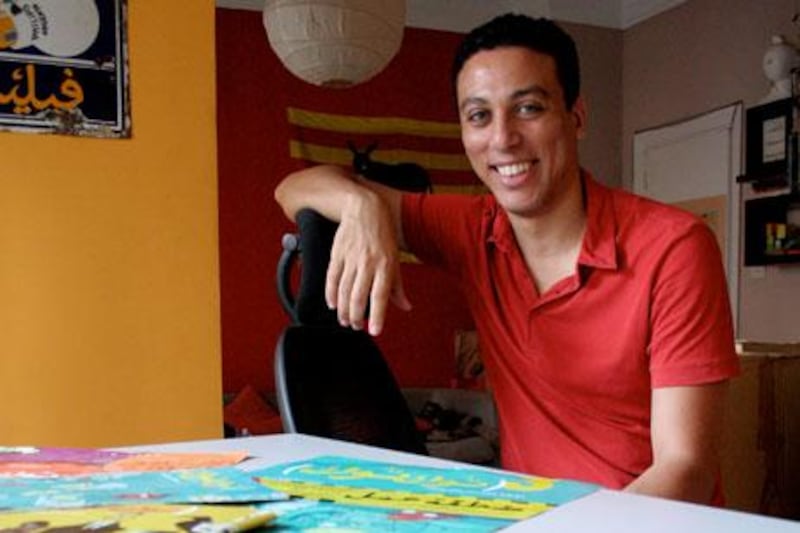Launched in January a week before the revolution, the comic book TokTok takes its name from the cheap, three-wheeled motorised rickshaws that have become pervasive on Egyptian streets.
Tuk-tuks can traverse narrow alleyways in densely populated urban areas. But they are also often used by those in rural areas as an affordable way to travel between villages and farms. According to Mohammed Shennawy, the magazine's creator, the tatty little vehicles are "directly from the streets, which is exactly what we want the comic book to be about".
TokTok, which launched its first issue on January 9, has quickly gained fans throughout Egypt's two largest cities. The creators originally published a mere 500 copies of the book, which sold out within two hours at the launch party. Now, with 1,500 copies of each edition printed, the magazine's popularity reveals a thirst among Egypt's young adults for relatable comics.
In many ways TokTok is distinctly Egyptian. The dialogue often uses colloquial dialects and localised cultural references. A few of the strips truly capture a sense of place in Cairo's chaotic streets - such as a comic featuring a pavement billboard whose racy ad of an attractive woman has been markered over by a passing bystander, or a tyre hung from a tree branch as mechanics smoke and harass a passing woman.
"Every artist has a different style," said Shennawy, noting that the third issue includes both science-fiction and thriller comics. "But they try to Egyptianise it, to capture the spirit of the country through details or words. It can be really good and funny, but still have a sense of elegance."
A handful of the artists who work regularly on TokTok are also cartoonists for local newspapers.
"These artists are already hitting the system everyday, even before the revolution, so it wasn't really our concern to continue in this direction in the magazine," Shennawy says. "Our concern was to tell stories about the lives of Egyptians."
That does not mean TokTok is apolitical. In the April issue the singularly named artist Andil chronicled his personal experience on January 26, when a group of TokTok's artists were arrested by the police in Alexandria with copies of their magazine.
"We had gone to Alexandria, and just didn't know it was going to be big like that," said Shennawy.
Submissions are open to anyone, and many of the country's young illustrators, who work in children's books, have turned to the magazine as a chance to experiment with new styles and narratives. TokTok's editors hope to soon offer workshops through Ninth Art, a parent company set to launch in the coming months.
"We want to make people remember the Golden Age of comics in Egypt," Shennawy said.
Cartoons and comics have been around in Egypt since the turn of the century. French and Dutch comic books, such as Tintin, were translated into Arabic and widely popular in Egypt during the 1960s. According to Shennawy, comic books produced in Saudi Arabia and the UAE were also successful in Egypt.
"It was mainly Egyptian artists working abroad, but [the magazines] had good art and good stories," he said. "Here, one artist was making Flash, which was comics and games. There were variations and choices and we need to bring this back to Egypt."
For more information visit www.toktokmag.com










